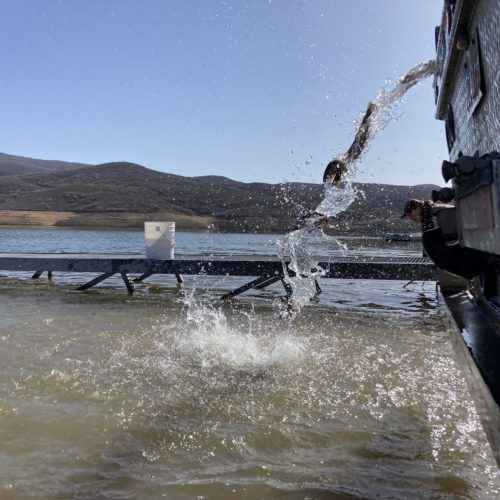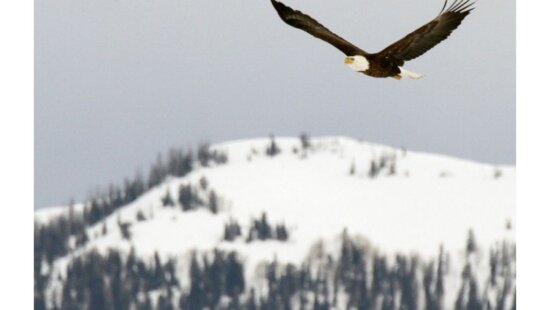Wildlife
DWR stocked 8.2 million fish throughout Utah in 2022

3-inch kokanee salmon stocked into Rockport Reservoir. Photo: Courtesy of Utah Division of Wildlife Resources.
UTAH —The Utah Division of Wildlife Resources announced Tuesday their fish stocking totals for 2022. Over the year, the division stocked 8,269,311 fish into 711 waterbodies throughout the state, many of them in Summit County, amounting to over 1.1 million pounds of fish throughout 2022. Drought has been the key factor in pushing the efforts and determining which areas were targeted for stocking.
Fish stocking and wildlife agencies go hand in hand as vital tools used in fisheries management. There are many reasons to do so, such as population control on another species, repopulating an area, or providing more opportunities for anglers. Each management plan for a waterbody includes stocking into their efforts as biologists work to achieve the goals they outlined. Some situations might call for sterile fish to be stocked, with Tiger muskie and Wiper hybrids being prime examples.
“Our hatcheries are important because they provide the majority of the fish we stock in the state,” DWR Aquatic Section Assistant Chief Craig Schaugaard said. “Stocking is a crucial management tool that we use to provide Utahns with the numbers and species of fish they desire. Stocking fish helps ensure that the public has a great fishing experience. It also helps in the recovery of threatened or endangered fish. June suckers were down-listed from endangered to threatened under the Endangered Species Act because of recovery efforts, including stocking.”
Over the past few years, Utah’s longstanding drought has prompted an increased effort to supplement populations and stock other fish species that can handle warmer conditions. The low water levels and warmer temperatures raise the stress levels of species such as trout, opening the door for diseases and other factors that lead to a higher mortality rate.
Utah has a long history of fish stockings dating back to 1871 when the first efforts were conducted. The fish were transported by train from other states and stocked in water bodies along the route. The first Utah hatchery was opened in 1897 to raise trout for stocking.
“These original hatcheries were really impounded streams where we put fry that we got from the federal government,” Schaugaard said. “We opened our first traditional fish hatchery — where we produced our own eggs and used raceways like we have today in Murray in 1899.”
DWR now has 13 facilities around the state where the majority of fish stocked in 2022 came from. The other source used came from hatcheries that are spread across the country.
To see a complete list of the species stocked by DWR and in which water bodies, visit the DWR website.






















